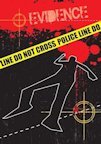One of the continuing debates within the GVP community is how to define ‘gun violence.’ On the one hand there are the obvious categories: homicide, assault and robbery with a gun. Then there is suicide with a gun, which results in death but is certainly a different sort of violence than what happens when a gun is used in a criminal act. And of course we also differentiate between intentional, as opposed to unintentional acts of gun violence; indeed, the latter may not actually be gun violence, even though someone still ends up being injured by a gun.
 Incidentally, outside the GVP, gun violence doesn’t exist. As far as I know, the NRA and the NSSF have never used the term ‘gun violence’ in anything they have ever said about guns. The various pro-gun noisemakers (Emily Miller, Dana Loesch, every Republican Presidential candidate, et. al.) prattle on about violent ‘thugs’ who use guns, but it’s people who kill people, remember? It’s got nothing to do with the gun. Now back to reality.
Incidentally, outside the GVP, gun violence doesn’t exist. As far as I know, the NRA and the NSSF have never used the term ‘gun violence’ in anything they have ever said about guns. The various pro-gun noisemakers (Emily Miller, Dana Loesch, every Republican Presidential candidate, et. al.) prattle on about violent ‘thugs’ who use guns, but it’s people who kill people, remember? It’s got nothing to do with the gun. Now back to reality.
Adding up all the categories above, the national gun violence toll in 2013 was 117,894. At least this is the number published by the CDC. By the agency’s own admission, this number is understated. Why? Because when we count nonfatal injuries, any kind of injury, we are estimating the actual number based on reporting from a ‘representative’ group of emergency medical facilities, and sometimes the estimations are close to reality and sometimes they are not. So the death toll is close to accurate but the injury numbers may or may not be exact. And this is a serious gap in what we know about gun violence because gun injuries are more likely to be significantly more serious than any other type of injury, unless you fall out of a fifth-story window and somehow manage to survive.
My friends at the Gun Violence Archive, by the way, have gun morality numbers which match up pretty close to the CDC. In 2014 the CDC found 12,265 gun deaths from every type of shooting except suicides. The GVA number for 2014 was 12,585. Obviously, the GVA calculation for non-fatal gun injuries is far below the number recorded by the CDC, because most shootings that don’t result in a death aren’t newsworthy enough to get media mention, which is the basic source of information used by the GVA.
Which brings me to the point of this commentary, namely, the fact that by focusing on gun deaths, as opposed to overall injuries, the main issue of gun violence is obscured, if not altogether lost. The gun violence issue is driven by homicides, particularly when a mass shooting occurs. But in terms of how many people are seriously affected by shootings, gun mortality is the tip of the iceberg, and we need to understand the totality of the problem if we are going to map mitigating strategies that will really work.
There’s a neighborhood in Brooklyn called Bedford-Stuyvesant, a.k.a., ‘Bed-Stuy, Do or Die.’ Like many Brooklyn neighborhoods, it’s beginning to experience a degree of gentrification, but the area around Fulton and Atlantic Avenues is still the Wild West. So far this year the neighborhood has experienced 2 murders, which if the carnage continues, the yearly homicide rate per 100,000 will top 20. But the total number of shooting victims is now 6, which will yield an annual gun violence rate of 60; further down Atlantic Avenue in East New York the GV rate could top 140 by end of year.
Numbers like this don’t describe an ‘epidemic’ of gun violence. Frankly, I don’t know whether we have invented terminology which accurately describes this state of affairs. But there are neighborhoods all over the United States which experience gun violence at levels equal or above to what goes on in Bed-Stuy; higher even than the violence experienced in Honduras or the Ivory Coast. I’m not even sure that a word like ‘violence’ describes what is really going on.
Feb 07, 2024 @ 10:01:16
This is why valid and consistent data is necessary to the debate. There needs to be some consensus on what the numbers and terms mean. We can’t have “mass shooting” be debatable because a small number of people died while many more were injured (think Aurora Cinema).
But the part which is the stickiest is that one has to admit the numbers are against them: rather than try and bury the data under a pile of bullshit.
Feb 07, 2024 @ 11:45:32
I concur.